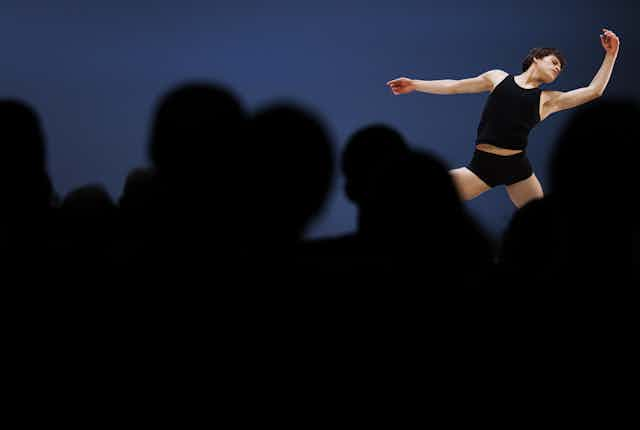Watching dance is watching an extraordinary and fleeting artistic creation that uses an instrument we all have: the human body. The dancing body communicates a unique sense of being human as it speaks to us through its bones, its muscles, its skin, its cells.
But have you ever been to a dance performance and wondered what it was all about? Or wanted to go see some dance, but been unsure of where to start?
For the uninitiated, dance can be difficult because, like music, it uses a non-verbal language. These basics can open the door to enjoying the beauty and complexity of this physical art.
Read more: I'm going to a classical music concert for the first time. What should I know?
1. Know the code
There are so many kinds of dance, and all have different ways of communicating – different codes.
For example, in ballet the body is vertical and straight and the legs and arms move around that erect centre. The emphasis is on lightness.
In contrast, in contemporary dance, the body contracts and bends and the movement is grounded and close to the floor.
And these are only two of the Western forms of dance. Every culture has their own dance form, and these all have their own codes.
Some performances are a blend of codes. For example, Bangarra Dance Theatre has created a style which blends traditional Indigenous Australian dance with Western contemporary dance and ballet.
Knowing the code means you know the building blocks, the rules, the frame for the performance. You have a benchmark for what to expect.
2. Do your research
If you’re going to see a ballet, there might be a story and you’ll be expected to know the story before you see the ballet – unlike plays where the excitement is the story being revealed on stage. Ballet companies will often publish this story on their website, or you can look up the work on Wikipedia.
But much like conceptual art (imagine a painting with a small red splodge in the corner of a green background – what does it mean?), the ideas behind a lot of dance performances are not immediately obvious. They may be quite abstract.
In this case, reading what the choreographer says about the work before you see it, and knowing a bit about their other works, gives you a context and a way to make meaning of what you see. You can find interviews with choreographers in various online publications, on company websites, or look them up on YouTube.
3. It’s all about the movement
Story or no story, dance is ultimately about a body moving through space. The pleasure in watching dance comes in engaging with the patterns, the movement vocabulary and phrasing, and the energetic quality of the dancers.
You can appreciate the pattern a body makes moving high or low, traversing the whole stage or staying in one place. With more than one body on stage, you notice the patterns the group make much like noticing the changing configurations of a flock of birds.
Movement vocabulary is the collection of “body words”, or steps, that are repeated and form dance phrases. These can be unique to a performance or a choreographer. The way the vocabulary is arranged in terms of structure, space and timing creates the dance.
The energetic quality of the dancers – think soft, light and flowing versus powerful, attacking and weighty – can change the emotion of the dance and your interpretation.
4. There are no right and wrong answers
A dance performance is not a murder mystery. In watching dance, you are not trying to unlock a singular meaning.
Instead, you are engaging with and appreciating all the factors listed here as well as the other arts on display including the sound, the designs, the lighting and the costumes. You may find a different meaning or different elements to appreciate to other people.
The performance in this video from Chunky Move clearly has characters suggesting a narrative, but it is left up to the audience to interpret the action for themselves. The main meaning comes through the concept being explored which is depth of field.
5. Know the etiquette
Like most shows and exhibitions these days, what you wear is up to you. Even in state theatres and opera houses, some will wear ball gowns, others jeans.
In a traditional theatre setting, once seated, you are expected to watch the whole performance. Some dance performances might be in galleries and for these you can wander around and leave when you’re ready.
Applause is a bit tricky. Sometimes you can applaud during the performance, and sometimes not. Even seasoned dance watchers sometimes get it wrong. So, until you get the hang of it, just follow along. At the end of the performance, there may be multiple curtain calls or bows, especially if there is a large cast, and the audience is expected to continue applauding as long as the bowing continues. You can leave once the lights come up.
If you feel very enthusiastic about the performance, you may stand and applaud. If most of the audience does this, it’s called a standing ovation. But it also doesn’t matter if you are the only one standing.
Read more: Let's dance! How dance classes can lift your mood and help boost your social life

